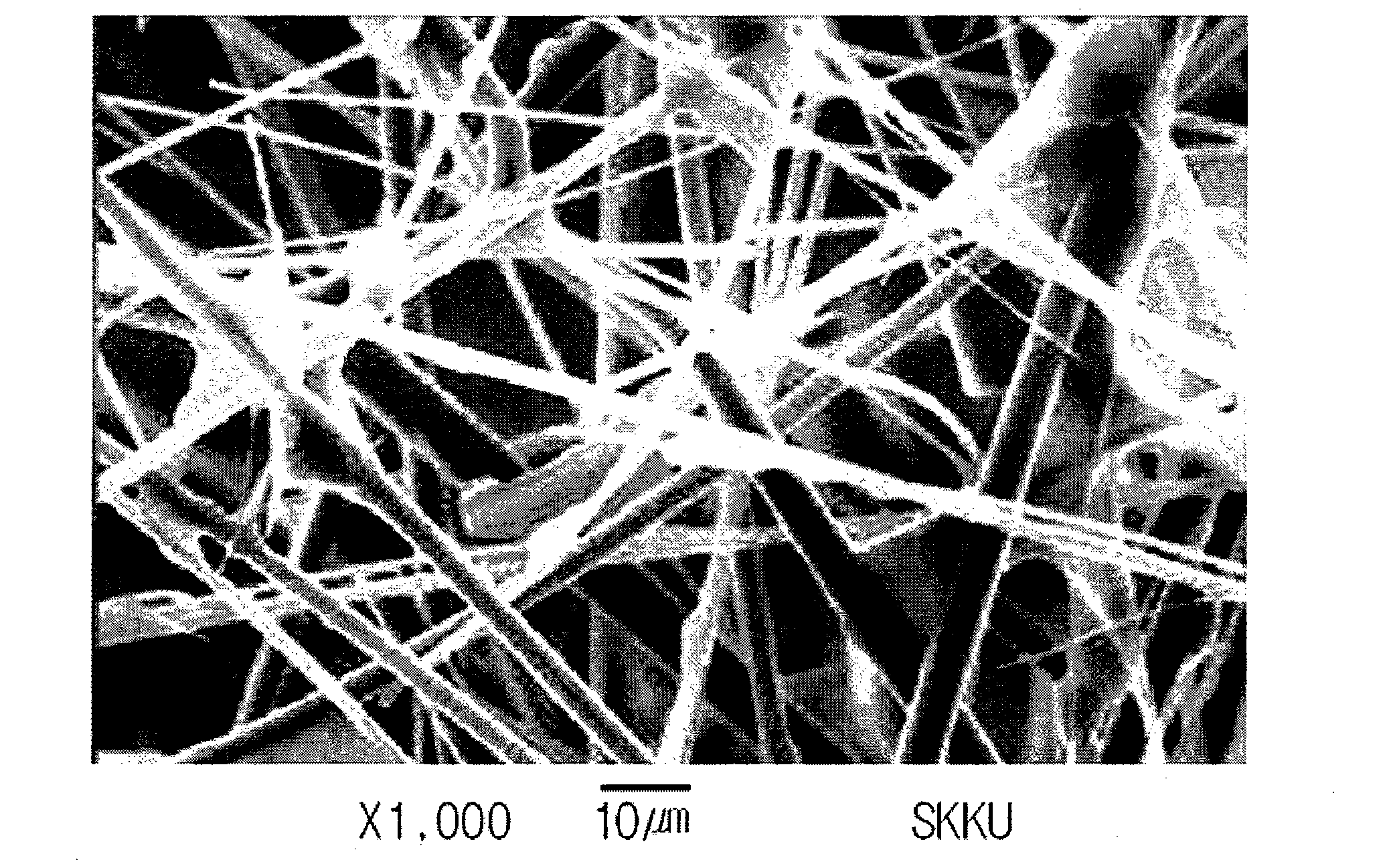Composite electrode and method for manufacturing the same
a composite electrode and manufacturing method technology, applied in the field of composite electrodes, can solve the problems of limiting energy density, ruthenium oxide electrochemical properties not yet comparable to ruthenium oxide, and the manufacturing of carbon/metal oxide composite electrodes by pasting methods may require a complicated process, and achieve high-temperature stability and large specific surface area.
- Summary
- Abstract
- Description
- Claims
- Application Information
AI Technical Summary
Benefits of technology
Problems solved by technology
Method used
Image
Examples
example 1
[0065]A composite electrode was manufactured using a ceramic filter, composed mainly of Al2O3 fibers, as the support. A product from the Kaowool Paper 1260 line, from the Morgan Crucible Company, was used for the ceramic paper.
[0066]The dried ceramic filter was immersed in pyrrole monomers, and then placed in an aqueous iron oxide solution to perform chemical polymerization. The polypyrrole-ceramic filter electrode thus obtained was cleansed using water and ethanol, and subsequently dried.
[0067]FIG. 8 shows a pure ceramic filter before polymerization. FIG. 9 is an SEM image of the ceramic filter coated with polypyrrole after polymerization, while FIG. 10 shows the image with a lower level of magnification, and FIG. 11 is the image magnified to show a single ceramic fiber. Through the drawings, it can be observed that the polypyrrole has been coated well over the ceramic fibers.
example 2
[0068]A composite electrode was manufactured using the ceramic filter used in Example 1 as the support. On the surface of the support, carbon nanotubes were grown perpendicularly to the surface of the support, using Ni as the growth catalyst and methane gas as the reactive gas. The Ni growth catalyst layer was produced to a thickness of 20 to 30 nm using sputtering. Afterwards, the carbon nanotubes were grown using a plasma-enhanced chemical vapor deposition (PECVD) method. Here, ammonia gas was used to create a reducing atmosphere, with a flow rate of 100 to 130 sccm and a vacuum degree of 1.2 to 1.3 ton. With the temperature of the substrate at 700° C., acetylene gas was supplied for 20 minutes at 30 sccm, to grow carbon nanotubes. Afterwards, polypyrrole was formed on the surface of the ceramic support having carbon nanotubes, using substantially the same method as that of Example 1.
example 3
[0069]Using the ceramic filter used in Example 1 as the support, the surface of the support was plated with silver particles. The plating was performed using a method of sequentially applying electroless copper plating and electroplating.
[0070]After the plating, carbon nanotubes were formed, and polypyrrole was formed, using substantially the same method as that of Example 2.
PUM
| Property | Measurement | Unit |
|---|---|---|
| Electrical conductor | aaaaa | aaaaa |
| Stability | aaaaa | aaaaa |
Abstract
Description
Claims
Application Information
 Login to View More
Login to View More - R&D
- Intellectual Property
- Life Sciences
- Materials
- Tech Scout
- Unparalleled Data Quality
- Higher Quality Content
- 60% Fewer Hallucinations
Browse by: Latest US Patents, China's latest patents, Technical Efficacy Thesaurus, Application Domain, Technology Topic, Popular Technical Reports.
© 2025 PatSnap. All rights reserved.Legal|Privacy policy|Modern Slavery Act Transparency Statement|Sitemap|About US| Contact US: help@patsnap.com



